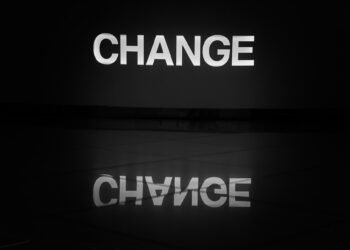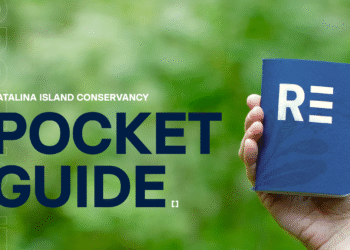Let me be blunt: the annual ritual of demanding a marketing plan from the CMO is a boardroom charade masquerading as strategy. The corner-office crowd think they’re extracting a roadmap—a neat, glossy prediction of what the company will do, spend, and achieve. They think they’re judging the plan. Wishful thinkers. The plan is a distraction, a fetish of the naive who believe the world bends to their spreadsheets. The real game, the actual signal amid the noise, is something far subtler, far more profound: it’s a test of the manager’s grip on reality, a gauge of their instinct for maneuvering through a world where improbabilities aren’t rare—they’re routine, and the dice are loaded with fat tails.
This article is part of Branding Strategy Insider’s newsletter. You can sign up here to get thought pieces like this sent to your inbox.
Let’s unpack this. The universe doesn’t operate under ceteris paribus—that economist’s fantasy where variables politely freeze while you tinker with one. Reality is a complex system—interdependent, nonlinear, full of feedback loops and Black Swan events poised to catch the unprepared. Markets shift. Competitors pivot. Technologies disrupt. Pandemics, wars, or a single tweet from a rogue influencer can upend your tidy assumptions. The data you lean on? It’s a rearview mirror, a snapshot of a past that’s already irrelevant. The future? It’s not a linear extrapolation; it’s a tangled whirlwind, non-ergodic to its core, where the ensemble average of possible outcomes bears no resemblance to the time path you’re actually stuck navigating.
So why demand the marketing plan? If the goal isn’t to “approve” it (and it shouldn’t be, because approving a plan assumes you can predict its fidelity to reality, which you can’t), then what’s the point? The point, mark this, is to test understanding. It’s about probing the manager’s art of sidestepping traps—their ability to avoid being misled by the illusion of control. A good CMO doesn’t deliver a plan as a forecast; they deliver it as a simulation, a thought experiment that proves they’ve wrestled with the messiness of their domain. The plan is a stress test of their situational awareness, their capacity to map the terrain of uncertainty and articulate a coherent response to it.
This is not about forecasting sales to the third decimal place or predicting which campaign will go viral. That’s for poseurs and spreadsheet sorcerers. No, the plan’s true value lies in demonstrating that the CMO gets it—that they understand the domain’s complexity, its stochasticity, its refusal to be tamed. A competent plan says: “I see the fog. I know the ground shifts. Here’s how I’d move through it today, knowing full well that tomorrow might demand a different path.” It’s a proof of concept, not a contract with the future.
And here’s the paradox: the plan’s obsolescence is its strength.
A manager who can craft a robust strategy under today’s constraints—knowing those constraints will mutate—is a manager who can do it again when the inevitable disruptions hit. The C-suite isn’t approving a set of actions; they’re approving a mindset. They’re betting on a leader who’s antifragile, who doesn’t just survive uncertainty but thrives in it. The plan is a sandbox, a low-stakes arena where the CMO rehearses their ability to adapt, to pivot, to exploit the disorder.
Contrast this with the daydreamers who treat plans as a sacred blueprint. They’re the ones who cling to their Gantt charts while the market laughs. They’re fragile, doomed to crack under the first Black Swan. The wise CMO, though? They don’t confuse the plan with prophecy. It’s a strategic sketch—valuable not for its certainty, but for the thinking it reveals. In a world shaped by volatility, the plan isn’t judged by how right it is, but by the quality of thought it reflects.
As a marketer, your job is to compete. Compete differently with The Blake Project.
To make this mindset stick, executives must shatter the mirage of predictability that shackles their organizations. Forget chasing flawless forecasts—here’s how to act on this truth:
- First, replace rigid targets with fluid playbooks. Map out multiple futures with strategies that flex as the ground shifts.
- Second, retire reward systems that prize false certainty. Instead, celebrate those who pivot fast when the signal shifts.
- Third, abandon the cult of lean efficiency. Build buffers—slack in time, cash, and capacity—to absorb shocks or seize upside.
So, next time you’re asked for an annual plan, don’t sweat the numbers. Don’t polish the slides to death. Instead, show them you see the chaos. Show them you can dance with it. Prove you’re not a naive planner but a navigator of the unknown. Because when the future won’t sit still, the edge belongs to those who don’t either.
Contributed to Branding Strategy Insider by Adel Borky, Marketing Consultant | Behavioral Science Aficionado
At The Blake Project, we help clients worldwide, define, and articulate what makes them competitive and valuable. Please email us to learn how we can help you compete differently.
Branding Strategy Insider is a service of The Blake Project: A strategic brand consultancy specializing in Brand Research, Brand Strategy, Brand Growth and Brand Education
FREE Publications And Resources For Marketers
Post Views: 39


















